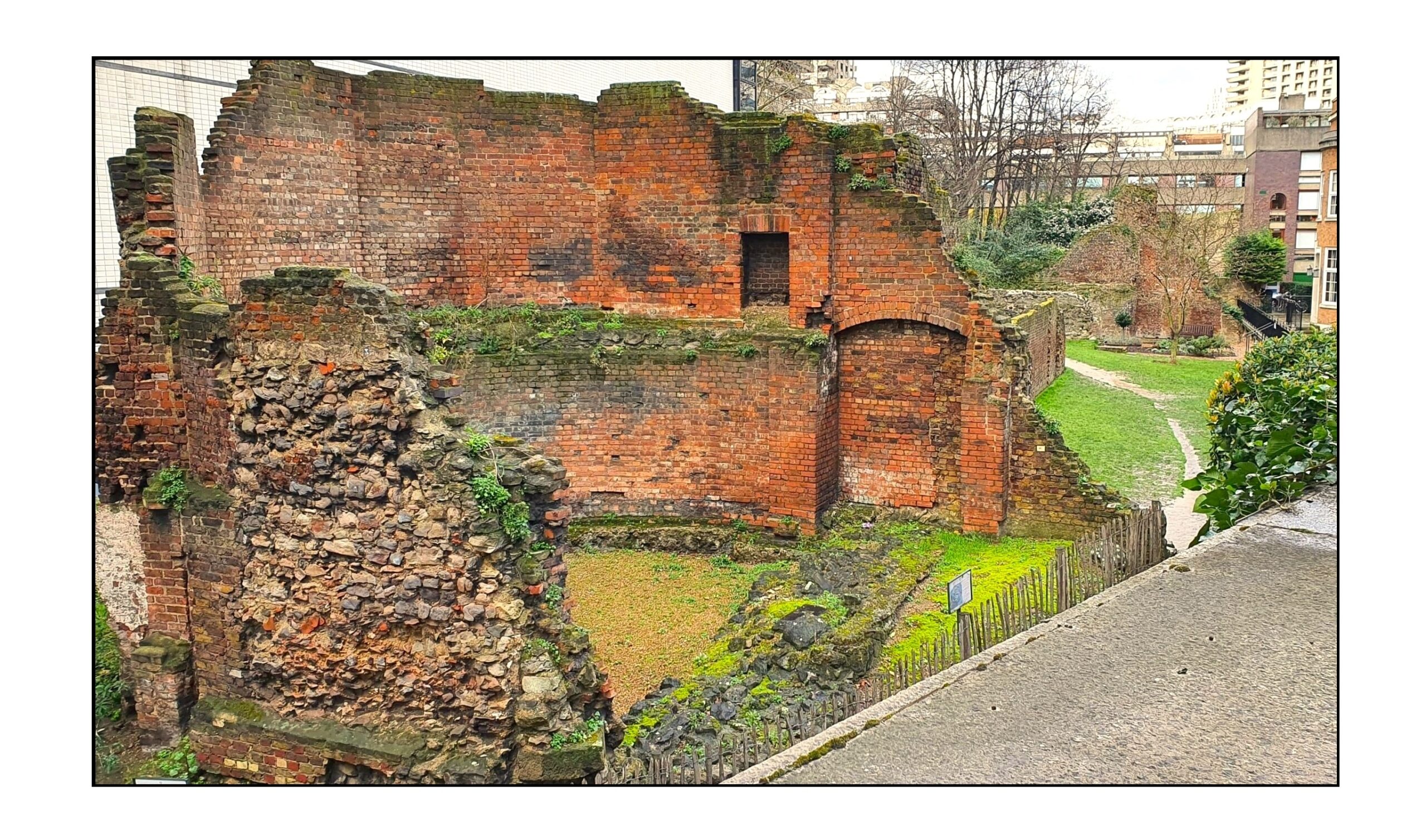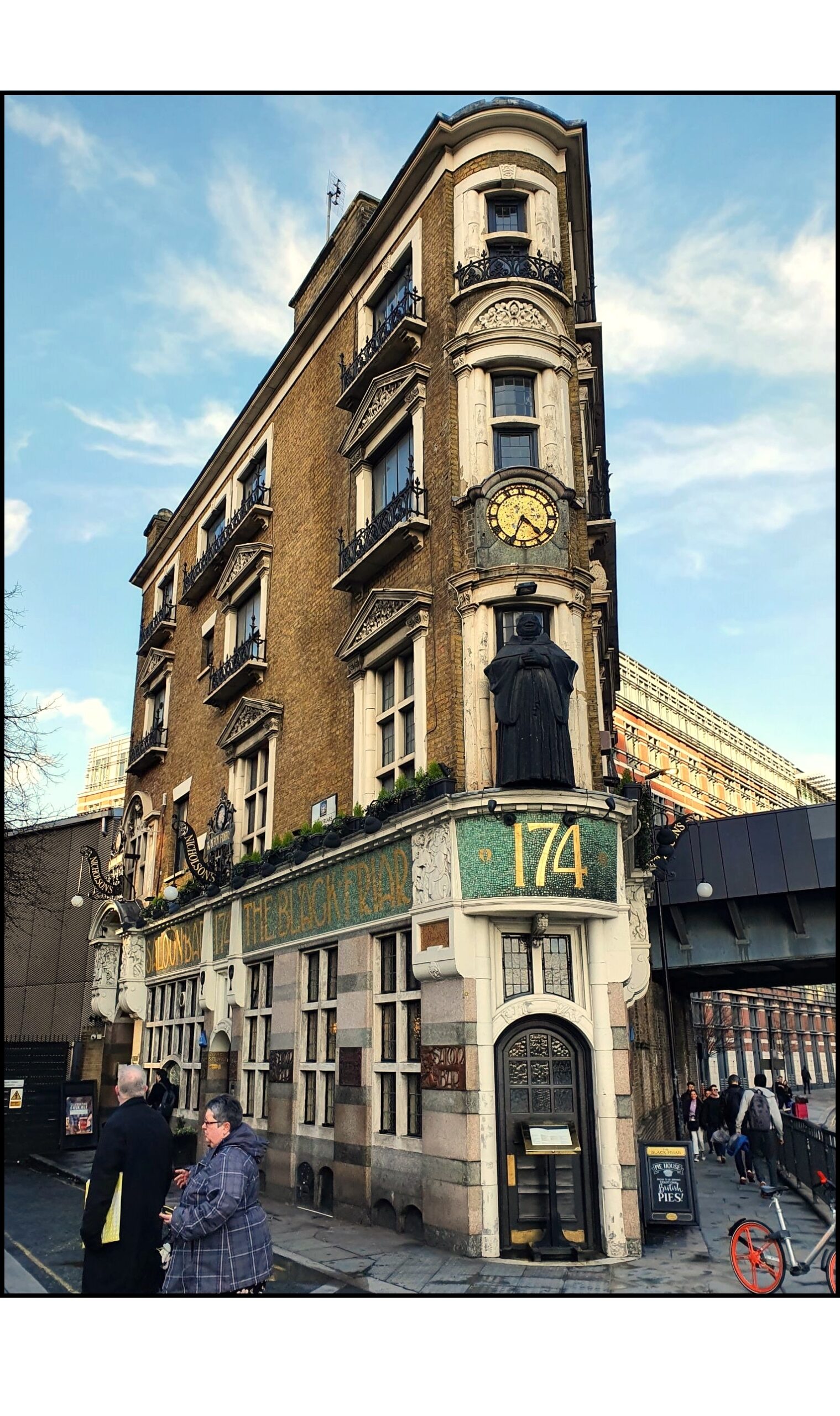
A fortnight ago I was out looking at bits of wall in the rain, and cold, and wind. I had no idea staring at ruined masonry could be so interesting. I also had no idea so much city wall survives in London. It’s a mixture of Roman, Saxon and Plantagenet. Oh, with some Victorian warehouse thrown in.
This was a walking tour of the City walls organised by one of the London Meetup groups. On this occasion I discovered that there are so many ‘St. Botolph-without-‘ parishes in London (without-Bishopsgate, without-Aldgate and without-Aldersgate) because St Botolph is the patron saint of travelers – he hails from East Anglia, and predates the usurper St. Christopher – and believe me if you were travelling by road away from London in the early middle ages you needed a saint covering your back, so a prayer and offering in one of these churches just outside (‘without’) a city gate was worth a try. There were four churches dedicated to St Botolph, but we lost St Botolph Billingsgate relatively recently, in 1666, in what I believe was a fire-related incident.
There is also some wall in situ around which a developer has built a basement meeting room within an office block. It’s illuminated by purple light and must certainly provide a conversation piece during awkward silences.
The lowest parts of the wall are Roman. After the Romans left (to take part in Gibbon’s Decline and Fall of the Roman Empire, as 1066 And All That humorously suggests) the Saxons would have nothing to do with the abandoned city and used the area around Covent Garden instead. Only after Vikings threatened did Alfred the Great decide the city walls might offer better protection – hence Saxon additions. Then with the Wars of Roses in full swing a bit more repair work and improvement took place – though it turned out it wasn’t needed. On a number of occasions we saw parts of the wall with Victorian brick in-fill. This is where the wall was used as part of warehouse structures, and these ancient survivals were only revealed as a result of the Blitz. The bricks have been left in place partly because they are part of the history of the wall, and partly for the more pragmatic reason that they prevent the wall falling down. See my post on Wilton’s Music Hall for another tale of structural integrity issues in London.

The walk ended at the tiny art nouveau Black Friar pub. This survived an attempt at redevelopment around sixty years ago, helped by that ever-present architectural campaigner of the 1960s, John Betjeman. Mind you, the plot of land is so small I can’t comprehend why any developer would hanker after the freehold, unless they fancied running a pub.
Nearest Stations: Tower Hill, Aldgate and Moorgate are particularly useful, depending on which part of the wall you wish to see.
Credits: